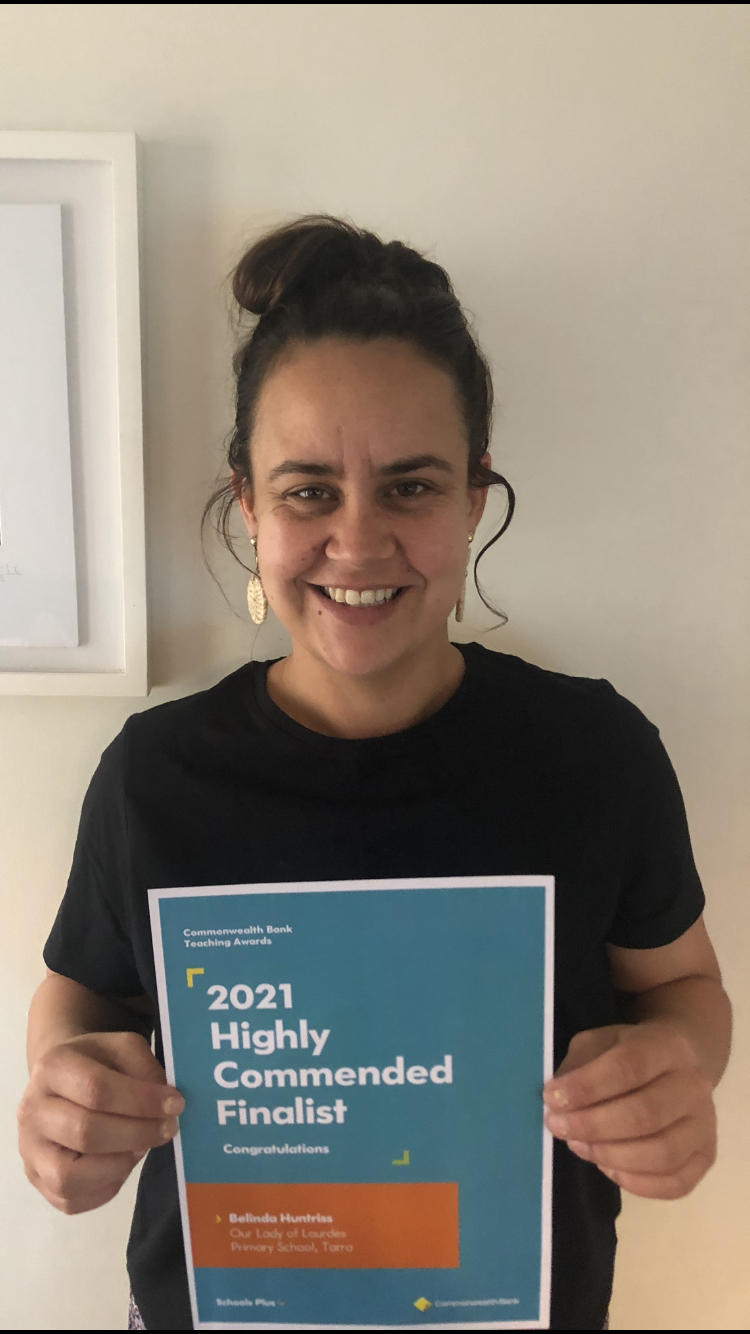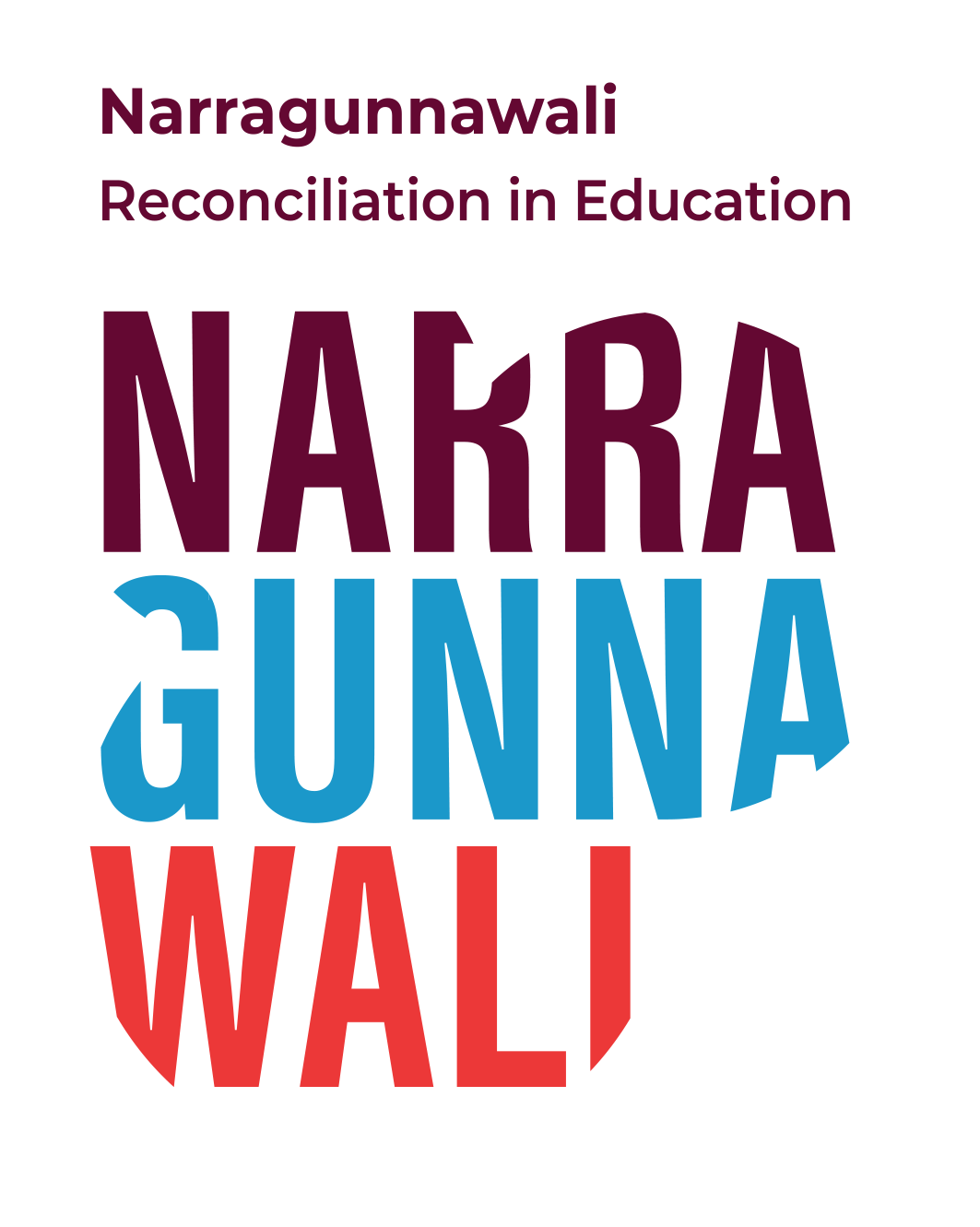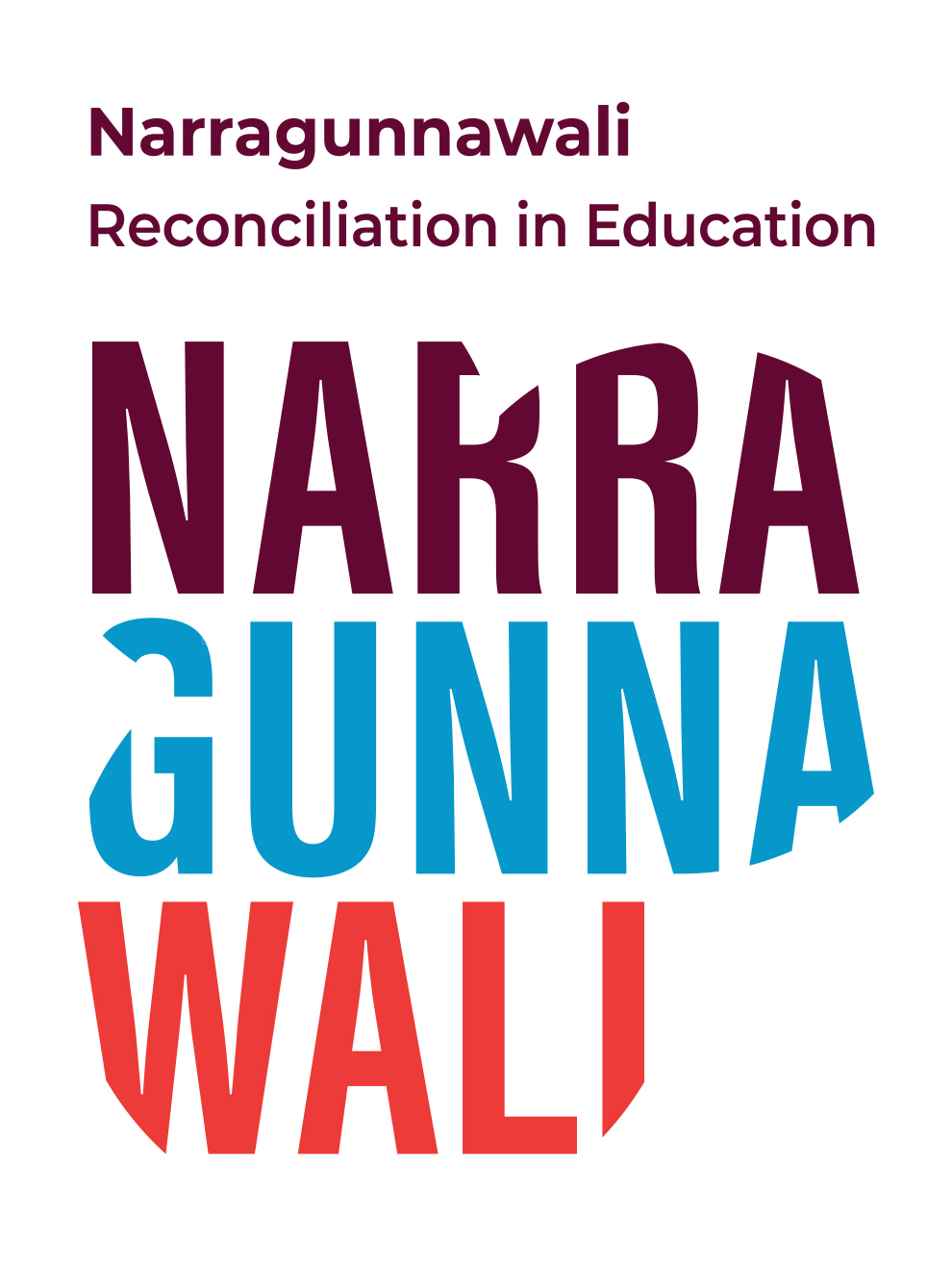Teacher Feature – Belinda Huntriss

Belinda Huntriss has worked in the Aboriginal Education space for fifteen years. She is currently employed as an Aboriginal Education Teacher at Our Lady of Lourdes (OLOL) Primary School, Tarro. With qualifications in both early childhood and primary teaching, Belinda is passionate about Aboriginal education and believes that all children learn best through Aboriginal pedagogies. Belinda's greatest achievement is being a mum to her two sons, Wilaaran and Yaarru.
Could you start by telling us a little bit about yourself?
I’m from a little place called Gloucester, NSW, on Worimi Country –. It’s a little town of 2000 people and it’s where I grew up, riding horses, fishing, swimming in the river.
In our town, in the early 1900s, there was an Aboriginal mission here, but the town became quite white-washed while I was growing up and many Indigenous families didn’t fit the visible criteria for ‘what an Aboriginal person looks like’.
I was identifiably Aboriginal, and so I experienced a lot of racism growing up and I was bullied at school. This is what inspired me to want to become a teacher.
However in my family, Aboriginality wasn’t talked about. We didn’t have any connections with extended family, or eat bush-tucker, or practice any cultural traditions. So, I was very confused growing up.
All the racism that I experienced at school made me feel that there was something wrong with being Aboriginal, and it actually made me want to be white like all my friends, I just wanted to fit in, but I also was yearning to know who I was.
I started talking to my family about my identity. We met with some of our local Elders and I started piecing things together, and connecting with other Aboriginal people and listening to their stories of pain, hope and resilience. Today I am still trying to reconnect to my traditional practices and our community has recently begun reawakening and learning language. It's super important for me to connect to country and culture because without it I feel I have a hole, like something is missing.
What is your role within the OLOL school community?
It is my third year at OLOL and I love this little school. My role here is as an Aboriginal Education teacher and my goal is to create the most change that I can through Aboriginal culture and education.
I teach in every class at least once a fortnight. I liaise with all the classroom teachers, and then support them to embed Aboriginal perspectives into their subjects – like science, maths, English, HSIE, PDHPE, creative arts, among others.
The teachers stay in the class, so it’s not a release from face-to-face. Instead, it’s a teaching and learning tool for the professional development of the classroom teacher.
We’re working on refreshing our RAP now, and I think it’s important to have someone in this specific role to help the families on this journey.
I've helped a lot of families to connect with their mob. We’ll have a cuppa and a yarn about connections
We have many students at the school who for one reason or another had not previously identified as being Aboriginal. A lot of them have fair skin and they feel confused about who they are, despite having the heritage. When they come to our cultural programs, we make sure that students feel like it is a safe space, that despite their lived experiences or disconnection, we are all mob.”
Can you tell us a little bit about the work that you did to create a child-friendly survey of attitudes towards reconciliation among children in your school community, based on the 2020 Australian Reconciliation Barometer, and what you learnt through this?
Racism, when I was younger, used to be things like name calling and derogatory slurs.
Now, I think, it’s a little bit more undercover than that- it’s online, it’s around the dinner table, its systematic. There’s general mistrust in the Australian community towards Aboriginal people. There’s stereotyping in the media, and racism is still very prevalent.
I came across the findings of the 2020 Australian Reconciliation Barometer survey by chance. I really was interested because in comparing the data that has been captured from the Australian community, I truly had a feeling that the students at our school would not have the same mistrust and negative feelings towards Aboriginal people that were evident within society. At our school, Indigenous culture is celebrated and positive, our students have a highexposure to Indigenous cultures perspectives and access to Indigenous role models.
I looked at the questions on the survey and adapted some of these within interviews with some primary (Year 3-6) students. I changed the questions to make them child friendly. We did this back in 2021 too, but this year's results are even more positive.
Our tests suggest that 88% of our kids thinks Australia is a racist country, versus 43% of the mainstream Australian community, demonstrating that they have a strong awareness of racism in its various forms.
What I'm finding is the kids almost always side with reconciliation – no matter what their background is. They know racism is there and it’s wrong, and they’re willing to take action against it.
What are some of the other key activities that your school has committed to drive reconciliation and why do you think it is important for schools to monitor RAP progress?
I think it is important for schools to monitor their RAP progress regularly through ongoing RAP committee meetings, staff development days and staff meetings. This ensures all staff know about their obligations under the RAP but are also informed about it. It also means people are held accountable.
We recently hosted a sustainability and cultural day at our school where we invited local Aboriginal businesses and sustainable local businesses raising funds for our Aboriginal cultural programs. We are also selling bush tucker from our native garden to local businesses to support this.
We have been working on our RAP for 2 years and have a highly engaged Aboriginal parent group as part of our RAP committee. We are taking the time to ensure our RAP is authentic and formed organically.
What is your personal vision for reconciliation in education, and across Australia?
My vision for reconciliation is that, as a nation, we have the courage to fully embrace and value the vast knowledge systems Aboriginal people have around caring for Country, fire management and sustainable ways of living so that together we can move into a more environmentally sustainable future together
I also hope we can continue to have hard conversations with each other about race, history and identity and teach the true history of our nation in schools so that we can move together towards reconciliation.
-
18 Apr 2024Teacher Feature – Sherri Bryers, Tasmania
-
18 Apr 2024Civil Discourse: Post-Referendum for schools
-
18 Apr 2024NATIONAL RECONCILIATION WEEK 2024 CURRICULUM RESOURCES

